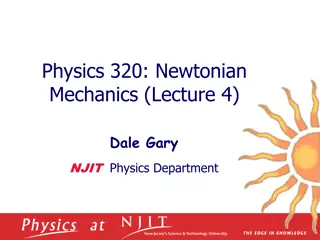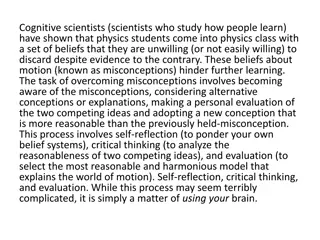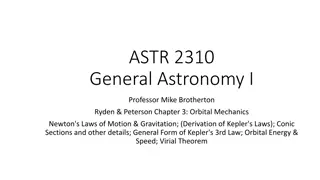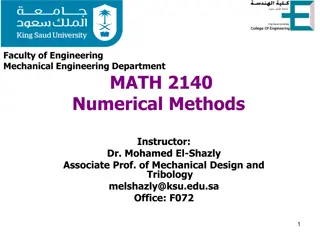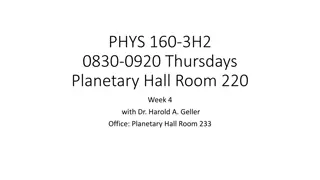Understanding Newton's Third Law of Motion
Explore the concept of Newton's Third Law of Motion, which states that for every action there is an equal and opposite reaction. Discover examples illustrating this law in action and learn about inertia, unbalanced forces, and the relationship between force, mass, and acceleration according to Newton's laws.
Download Presentation

Please find below an Image/Link to download the presentation.
The content on the website is provided AS IS for your information and personal use only. It may not be sold, licensed, or shared on other websites without obtaining consent from the author. Download presentation by click this link. If you encounter any issues during the download, it is possible that the publisher has removed the file from their server.
E N D
Presentation Transcript
Newtons Third Law of Motion For every action, there is an equal and opposite reaction. Hero s Engine DEMO
Newtons Third Law of Motion For every action, there is an equal and opposite reaction. The block s weight pushes on the ground The ground pushes back on the block
Examples of Newtons Third Law Identify several action-reaction force pairs in the photograph. The cannon exerts a force on the cannon ball, and the cannon ball exerts an equal and opposite force on the cannon.
Examples of Newtons Third Law Identify several action-reaction force pairs in the photograph. The space shuttle exerts a force downward, and the reaction force pushes it upward.
Examples of Newtons Third Law Identify several action-reaction force pairs in the photograph.
Concept Review Inertia 1. ______________ is an object s resistance to changing its motion. 2. Applying an unbalanced ___________ to an object causes it to ______________. 3. Based on Newton s first law, if no forces are acting on an object, its ____________ will not change. 4. From Newton s second law, an object s acceleration depends on the object s ________ and the strength of the ______________ _______ acting on it. 5. Newton s third law: For every action there is ________________________________________. force accelerate velocity unbalanced force mass an equal and opposite reaction








